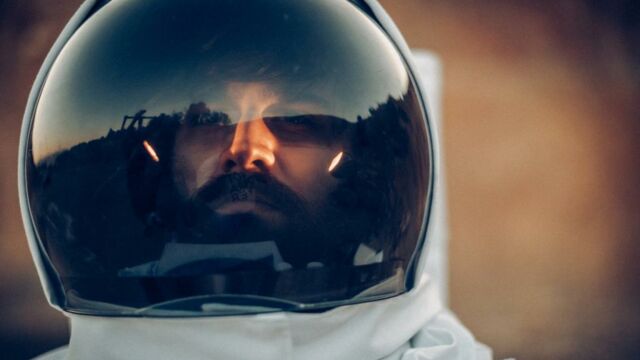Scientists have come up with a revolutionary method to fee astronauts in space

Scientists have developed a method to convert human waste into a potential power source that could be used by astronauts on long journeys.
A team from Penn State University in the United States has shown that it is possible to quickly convert liquid and solid waste into food through a series of reactions involving micro-organisms.
Discover our latest podcast
Does this mean that astronauts will eat plastic boxes and paper leaves in the coming years? We are not there yet, but the technique is promising, especially since it does not release any pathogenic bacteria into the environment.
More under this adMore under this ad'The concept would look like a cooking pot'
Christopher House, one of the professors behind the experiment, says:
We tested a concept that treats astronauts' waste with microbes while producing biomass that is directly or indirectly edible. It's a little strange but the concept would look a bit like a pot.
Scientists developed this experiment to solve several problems encountered on long-distance missions. Like food brought from the Earth takes up space and increases the consumption and mass of gasoline in the shuttle.
More under this adMore under this adCreating food onboard the ship would cut corners. But most of the methods already studied require high consumption of water and energy. Which is why scientists have looked into this revolutionary approach.
A cylinder containing microbes
To test their idea, researchers used solid and liquid wastes used regularly in waste sorting tests. They created a cylinder in which the microbes come into contact with the residues.
More under this adMore under this adThese microbes break up waste by using an anaerobic digestion process, a process similar to what happens when humans digest their food.
During this digestion, a large amount of methane is produced. This gas can then grow another microbe, Methylococcus Capsulatus. It can then help produce food that could be used in long-distance flights.
More under this adMore under this adIncrease the temperature to obtain a new bacterium
In order to avoid the appearance of pathogenic bacteria, they raised their system to 70° C. Sufficient to eliminate any risk of infection but also to grow the bacteria Thermus Aquaticus. This one, edible, will be at the base of the regime of the astronauts.
In 13 hours, about half of the waste put in the tube was transformed into edible bacteria. This is much faster than the usual waste treatment processes, which can take up to several days.
More under this adMore under this adQuicker than growing tomatoes or potatoes
The researchers made it clear that their system was not yet ready for use, as the various components were tested one after the other and not as a complete system. But, nevertheless, the idea is likely to grow. Christopher House concludes:
I think there is real potential for future long-distance space flights. This process takes much less time than growing tomatoes or potatoes.More under this adMore under this ad
Who also notes that recycling waste would allow crews to avoid throwing them into the atmosphere.
Check out the video above for more on this odd development...